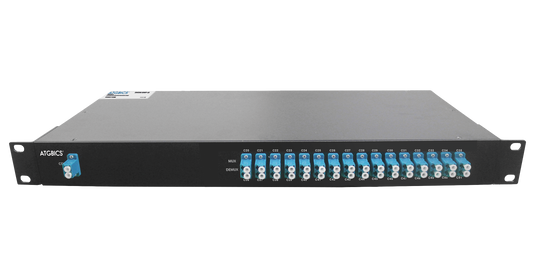Wavelength Division Multiplexing, or WDM technology is used to increase bandwidth within fibre optic networks. This is done by channeling multiple optical signals down a single fibre, drastically increasing the amount of data that can travel through a network. A Multiplexer (MUX) sits at one end collating the data signals before sending them down the fibre. On the other end, a Demultiplexer (DEMUX) reads the incoming signal and splits it back up across the multiple channels. This is a hugely useful technology with many advantages over point to point infrastructure, especially with modern data requirements.
There are two types of WDM systems, Coarse WDM (CWDM) and Dense WDM (DWDM) both with different characteristics and uses.
See our Tech Talk post for more information on Wavelength Division Multiplexing (WDM) and how it works.











